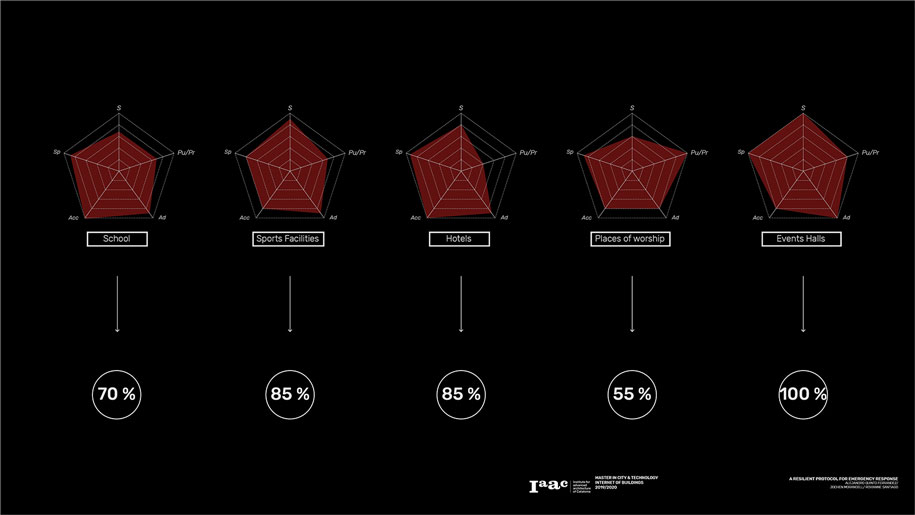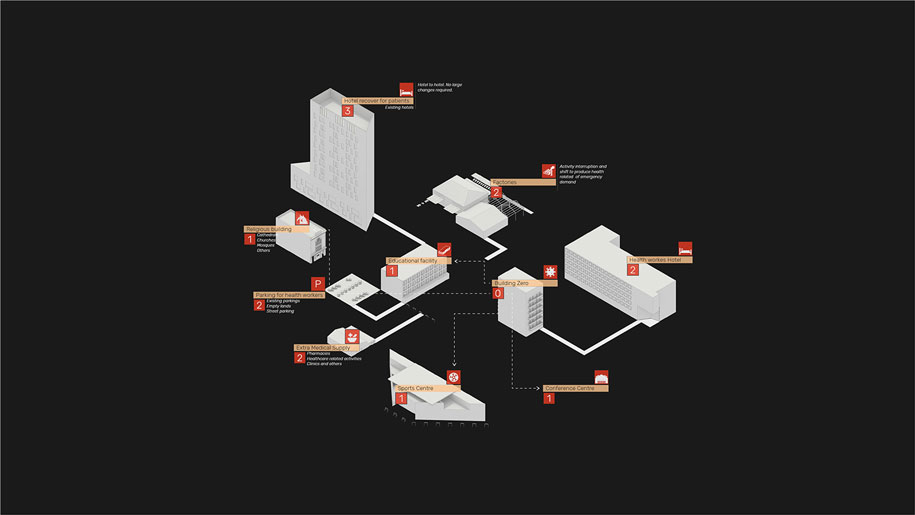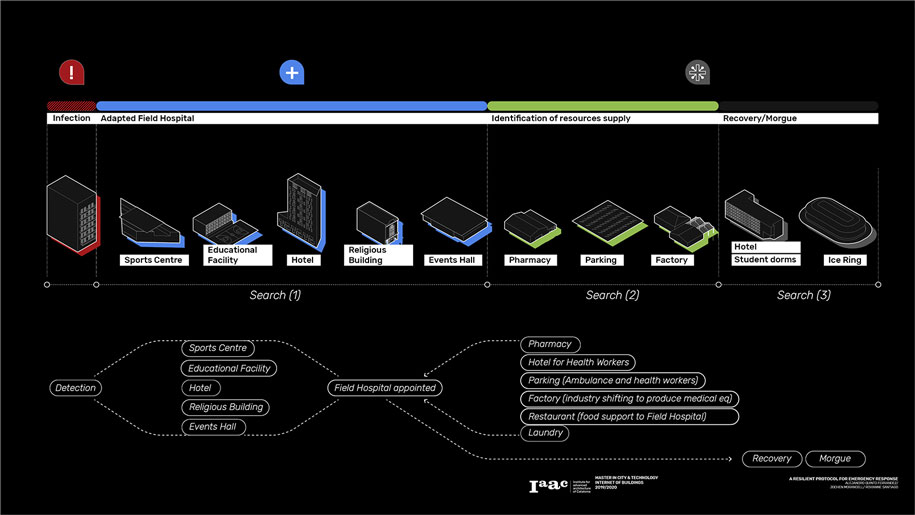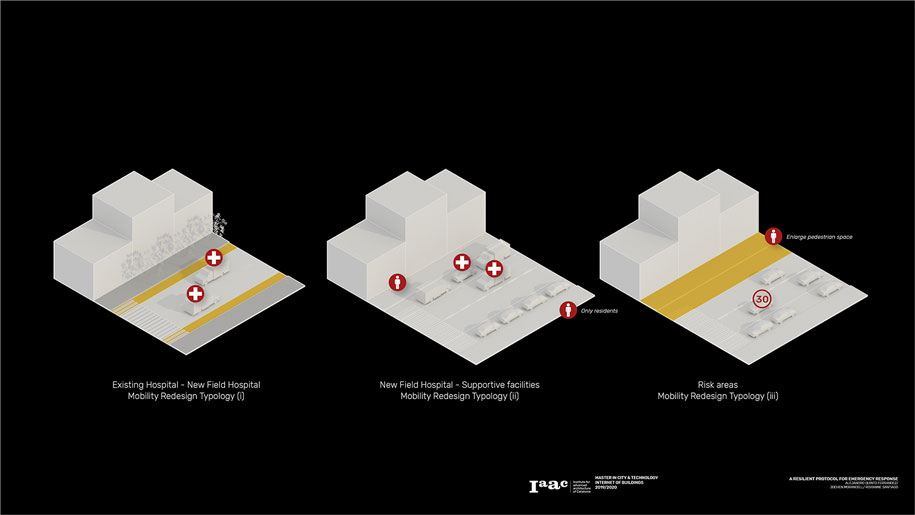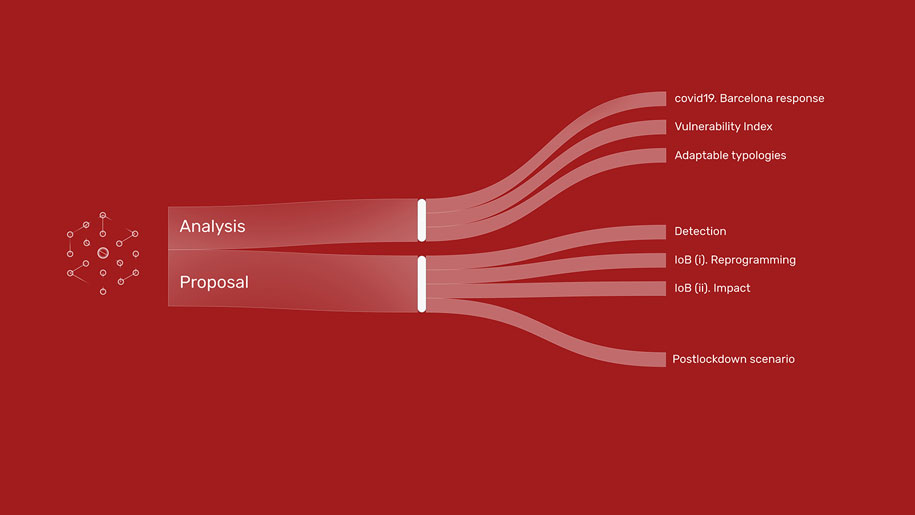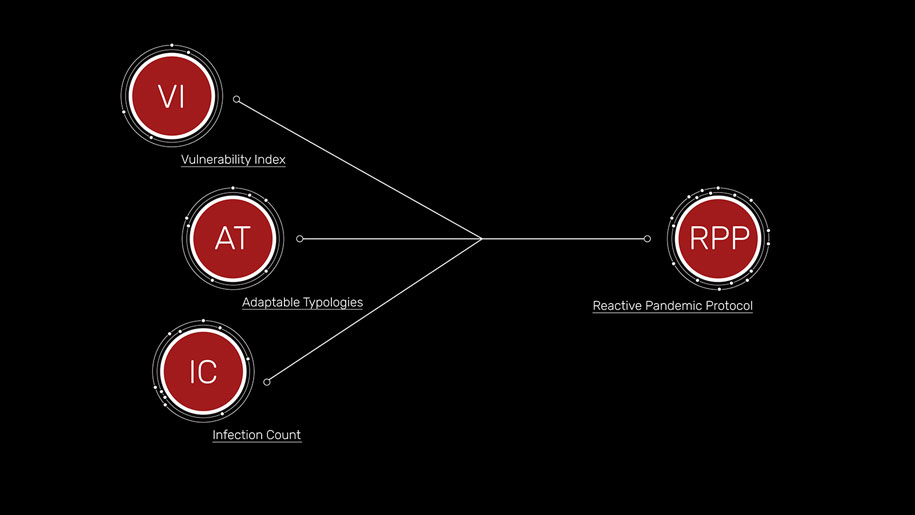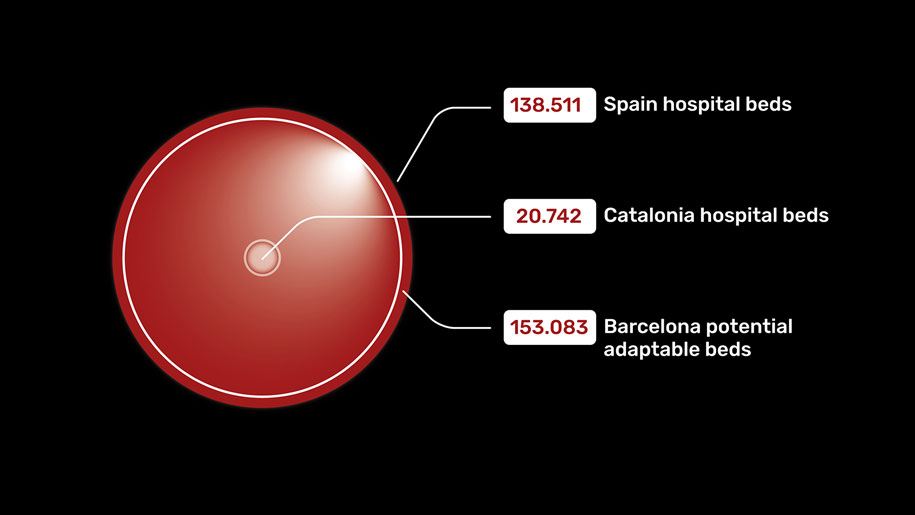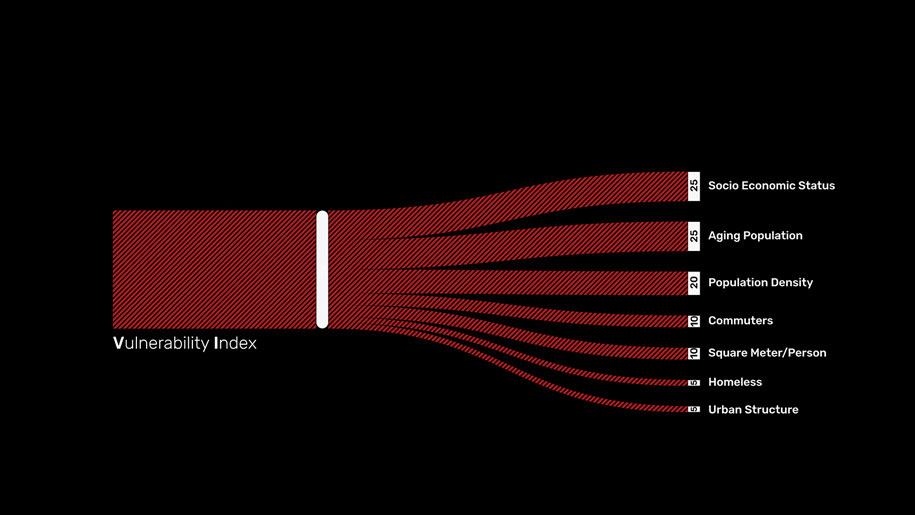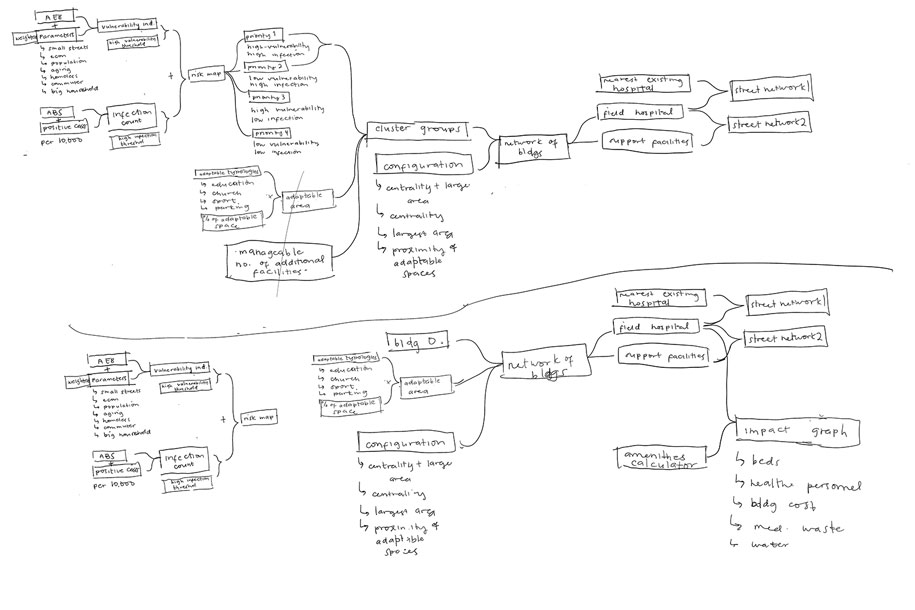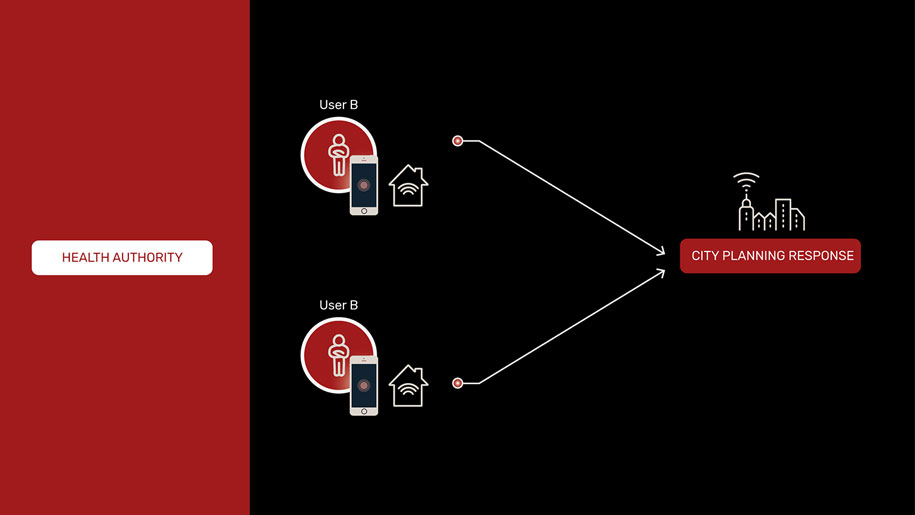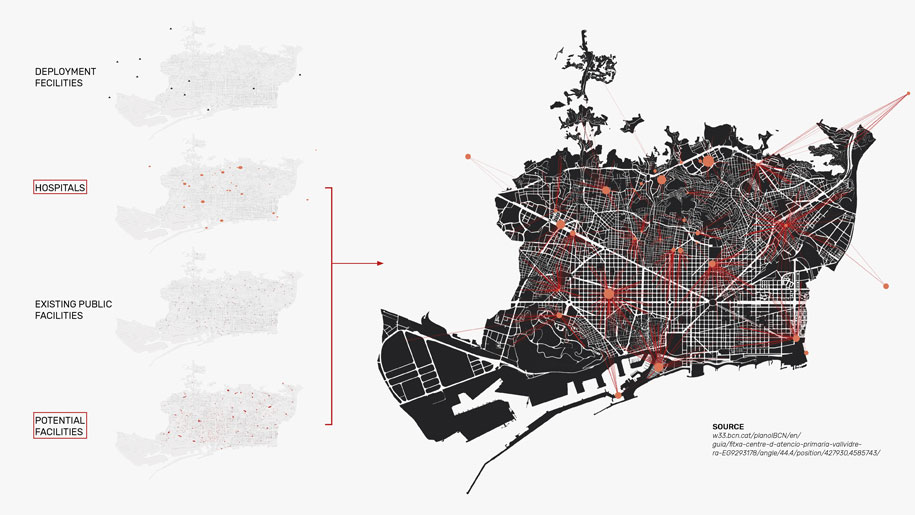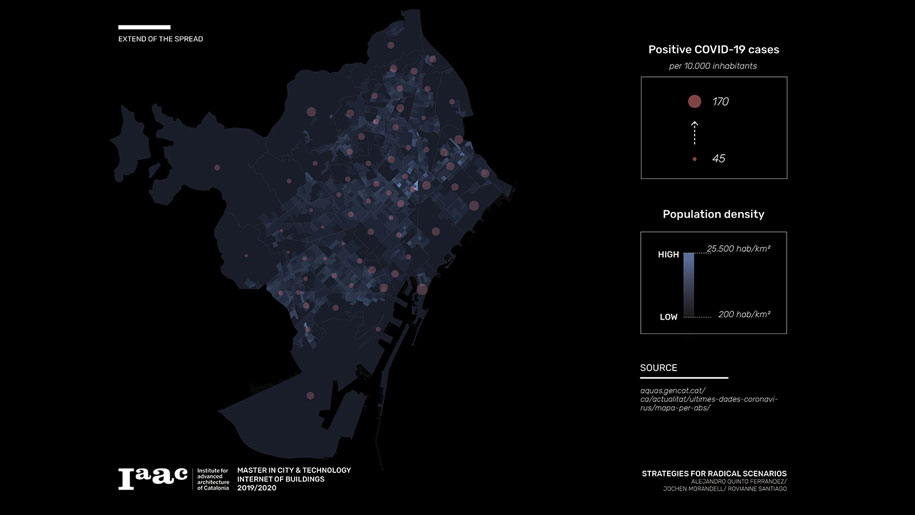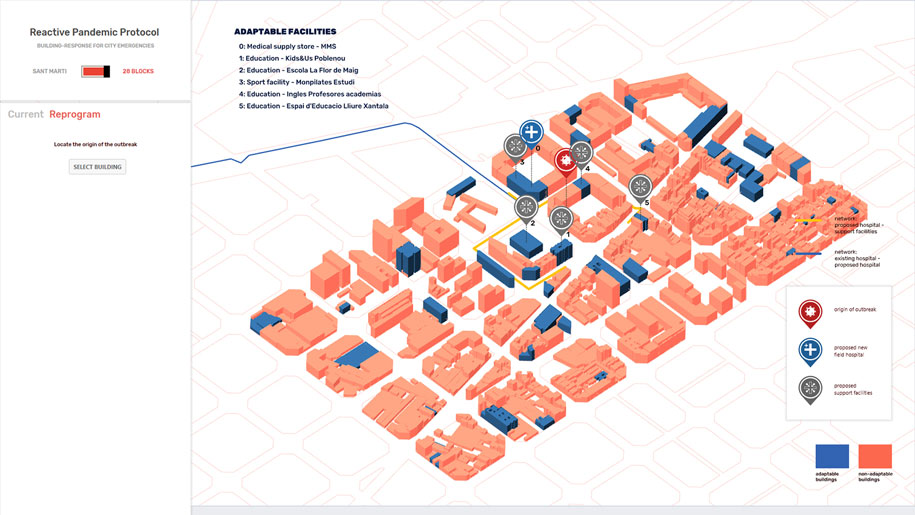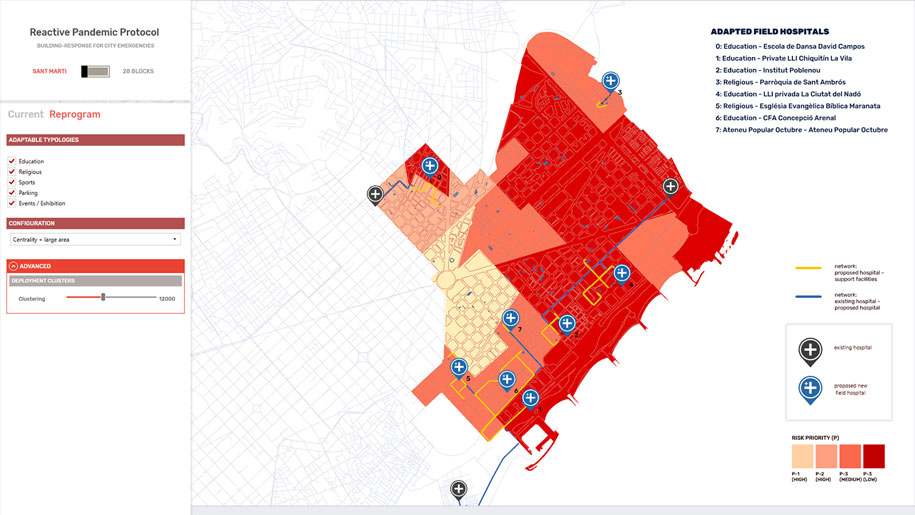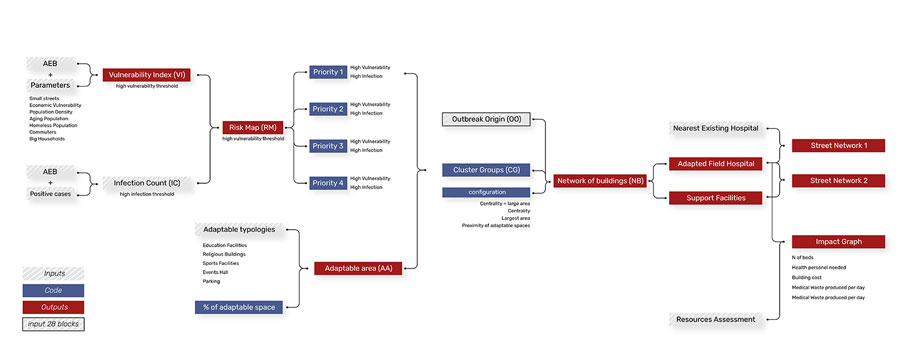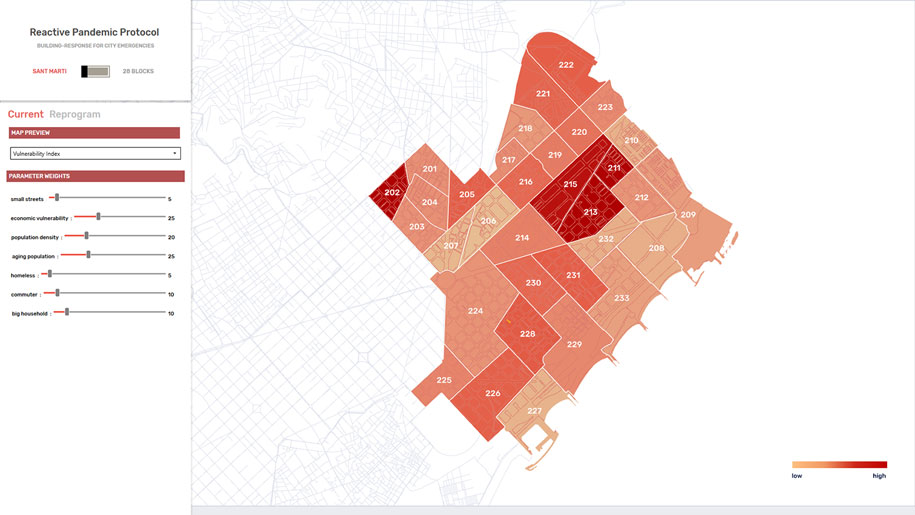Our cities are not ready for an unexpected disruption such as the one we are living in right now. We have seen it over the last months of our lives. Covid-19 has placed an immense pressure on our healthcare system and forced organisations to dramatically change the way they operate and to co-operate in new ways. The pandemic can offer a fresh sense of urgency to resolve these issues and leave us with a system that works better and in a smarter way.
And although we are aware of the limitations to prevent this type of threat, we can be more prepared to contain it whenever and wherever it hits.
How can we design a protocol of design intervention that brings together buildings that will be non operational during such circumstances? We have seen all around the world how a vast amount of different buildings would transform in order to serve as a support of a collaborative network to fight the pandemic.
But, what if from the first second of detection of a carrier, a whole network of agents can distribute information and deploy a protocol emergence that would reprogramme the use of buildings in hours? What if we could have an impact assessment in advance to inform decision makers?
The Reactive Pandemic Protocol is an Instrument for cities to decrease the response time for disruptive events. Reprogrammed Buildings will be transformed into needed Infrastructure in order to extend needed capacities at the origin of the emergency. Together the Buildings form a Network and according to this, the Streets will be reprogrammed to support the Building Network and its intern and extern connection.
The Protocol can first support those places where the healthcare system has collapsed but also keep the economy alive by transforming businesses and typologies in what’s needed the most in for the new Building Network in these times of crisis.
The Reactive Pandemic Protocol mitigates pressures on the city in a disruptive event like a pandemic. The great advantage lies in the adaptability of the protocol to other emergency situations such as urban flooding, climate change, natural catastrophe, immigration, migration, or refugees.
Considering the Adaptability, multi-scalability, and Flexibility of the Reactive Pandemic Protocol underline its potential to prepare and to develop the current city into resilient urban systems.
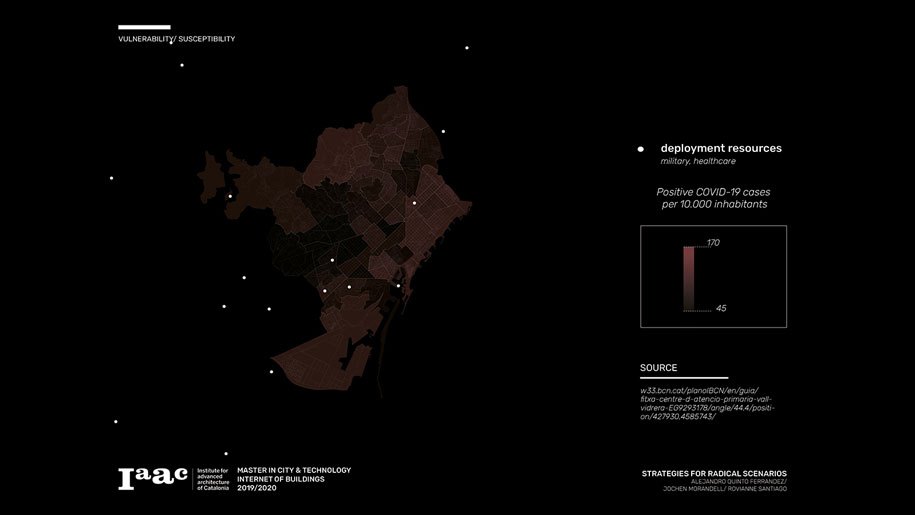
Preparedness, the capability of a quick response, and mitigation of the impact are the objectives of the RPP. A resilient city is characterized by the fact that its infrastructure capacity can be flexibly adjusted in order to guarantee service at peak situation for Infrastructure in an emergency. At the same time, the Infrastructure can be scaled to an efficient scale for times without an emergency.
Mitigation is essential especially for non-predictable events and in cases of Absent of emergency infrastructure and can help in the future countries and cities that don’t have enough resources to prepare and reprogram their cities for highly unexpected scenarios.
Facts & Credits
READ ALSO: Icaria elsewhere: The island as a place between utopia and reality | Research thesis by Chara Agnanti & Meropi Konstantinidou
